ACNE
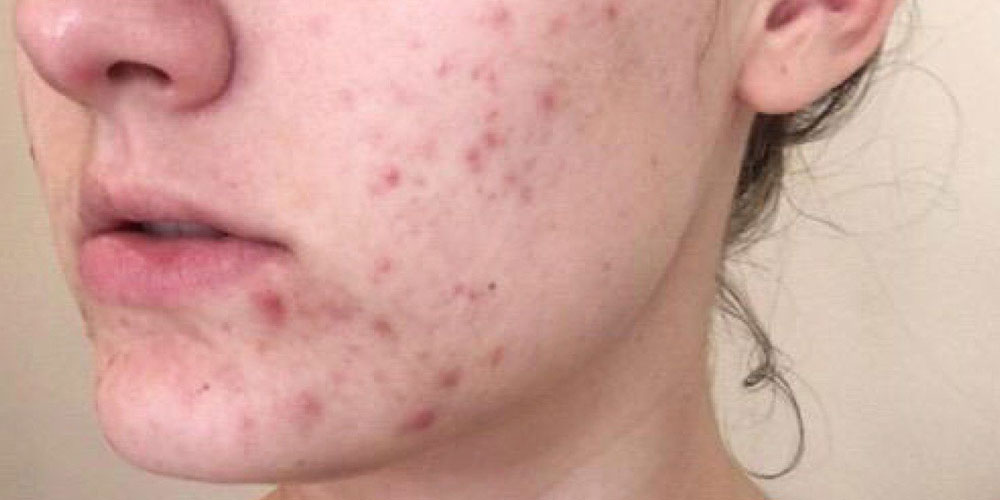

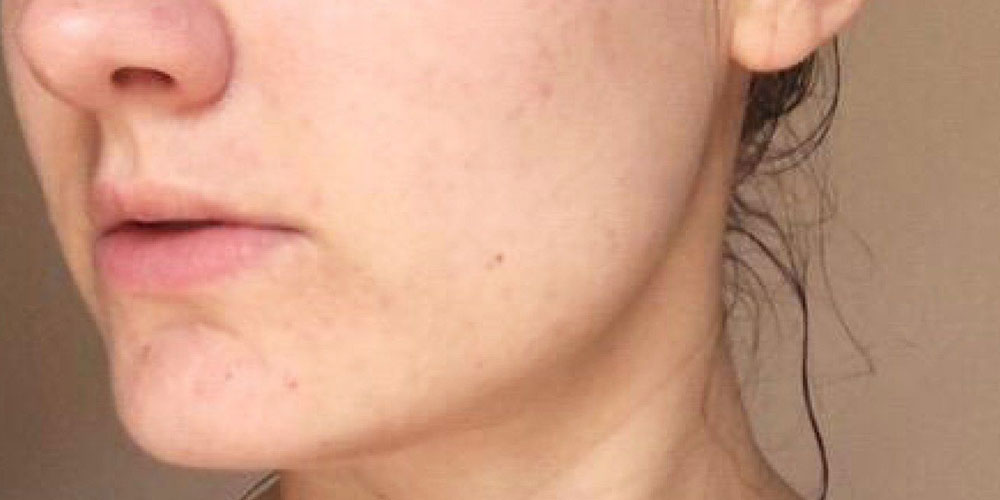
Acne is a skin condition that occurs when your hair follicles become plugged with oil and dead skin cells. It often causes whiteheads, blackheads or pimples, and usually appears on the face, forehead, chest, upper back and shoulders. Acne is most common among teenagers, though it affects people of all ages.
Effective treatments are available, but acne can be persistent. The pimples and bumps heal slowly, and when one begins to go away, others seem to crop up.
Depending on its severity, acne can cause emotional distress and scar the skin. The earlier you start treatment, the lower your risk of such problems.
Acne is common and troublesome for teens and adults alike. We offer traditional therapy (such as creams, antibiotics, and Accutane®), as well as recent advances (such as laser and light treatments). Each patient’s case is different; we will tailor a treatment program specifically for you.
WHAT IS ACNE?
Acne is a condition affecting more than 17 million people. 85% of 12-24 year-olds, 8% of 25-34-year-olds and 3% of 35-44-year-olds have acne . It consists of unsightly red pimples, white and blackheads and occasionally painful cysts of the face, back and chest. Besides discomfort, acne can cause decreased self-esteem and permanent scarring.
WHAT CAUSES ACNE?
The two main causes of acne are blockage of the pores and bacterial growth. Oil and cells get trapped below the surface of the skin, creating a growth medium for the bacteria. White cells migrate to the site to fight the bacteria, in turn releasing chemicals that lead to swelling, redness and further attraction of white cells (inflammation). The result is a dilated pore, filled with white cells, inflammatory and anti-inflammatory chemicals and bacteria. This is the content of the acne pimple.
It is hormones and genetics that determine how much acne you will have. A typical teenager has some “normal” acne, that is, most teenagers have at least a few pimples now and then, due to the increase in hormones at puberty which stimulate the sebaceous glands. There may be genetic factors that determine who much acne bacteria remains on the skin, as well as those individuals that suffer from moderate to severe acne.
Many women in their 30’s, 40’s, and 50’s suffer from “hormonal” acne, that is, it appears to be caused by an increase in the sebaceous gland’s response to circulating (normal) hormones with age. Why this occurs is poorly understood. There is also a subset of women with “true” hormonal acne who have abnormal levels of androgenic (male-type) hormones. These women often have accompanying excess facial hair (also hormonally regulated) and irregular menstrual cycles, although women who have normal hormone levels may also have excess hair.
Flare Factors: Stress, menses, puberty (new onset hormones).
ARE THERE DIFFERENT TYPES OF ACNE?
There are two main types of acne: non-inflammatory and inflammatory. • Non-inflammatory or comedonal acne consists of whiteheads and blackheads. These represent pores that have been obstructed by oil and secreted skin cells. Whiteheads have a closed top, whereas blackheads are open to the surface. The dark color is from oxidation (a chemical reaction) when air comes into contact with its contents, not due to dirt lodged in the pore. • Inflammatory acne lesions are red bumps. These can be papules (small bumps), nodules (larger bumps) and cysts (very large, deep and occasionally tender bumps, so- called “undergrounders”).
WHAT DOES ACNE LOOK LIKE?
There are two main types of acne: non-inflammatory and inflammatory. • Non-inflammatory or comedonal acne consists of whiteheads and blackheads. These represent pores that have been obstructed by oil and secreted skin cells. Whiteheads have a closed top, whereas blackheads are open to the surface. The dark color is from oxidation (a chemical reaction) when air comes into contact with its contents, not due to dirt lodged in the pore. • Inflammatory acne lesions are red bumps. These can be papules (small bumps), nodules (larger bumps) and cysts (very large, deep and occasionally tender bumps, so- called “undergrounders”).
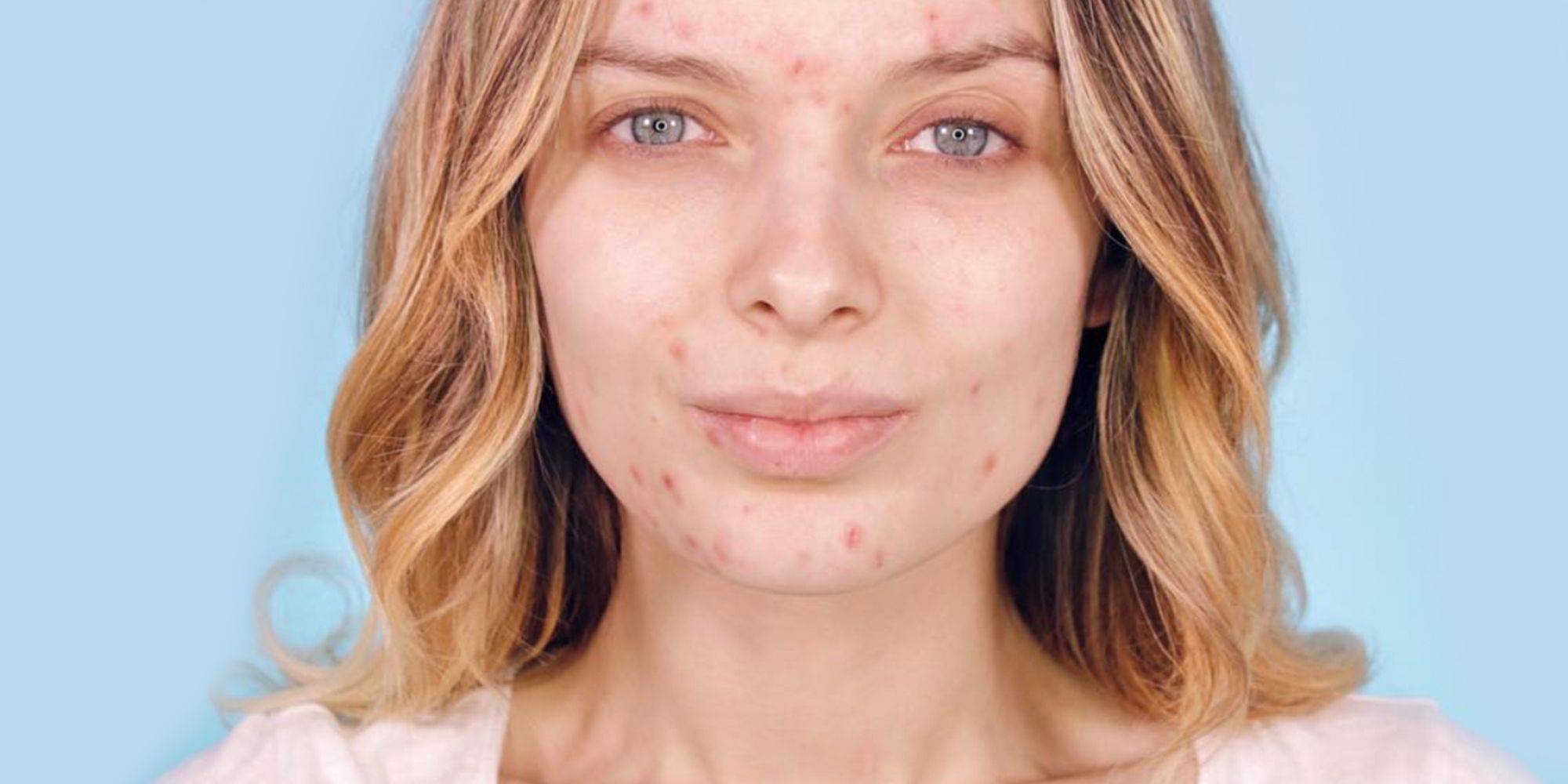
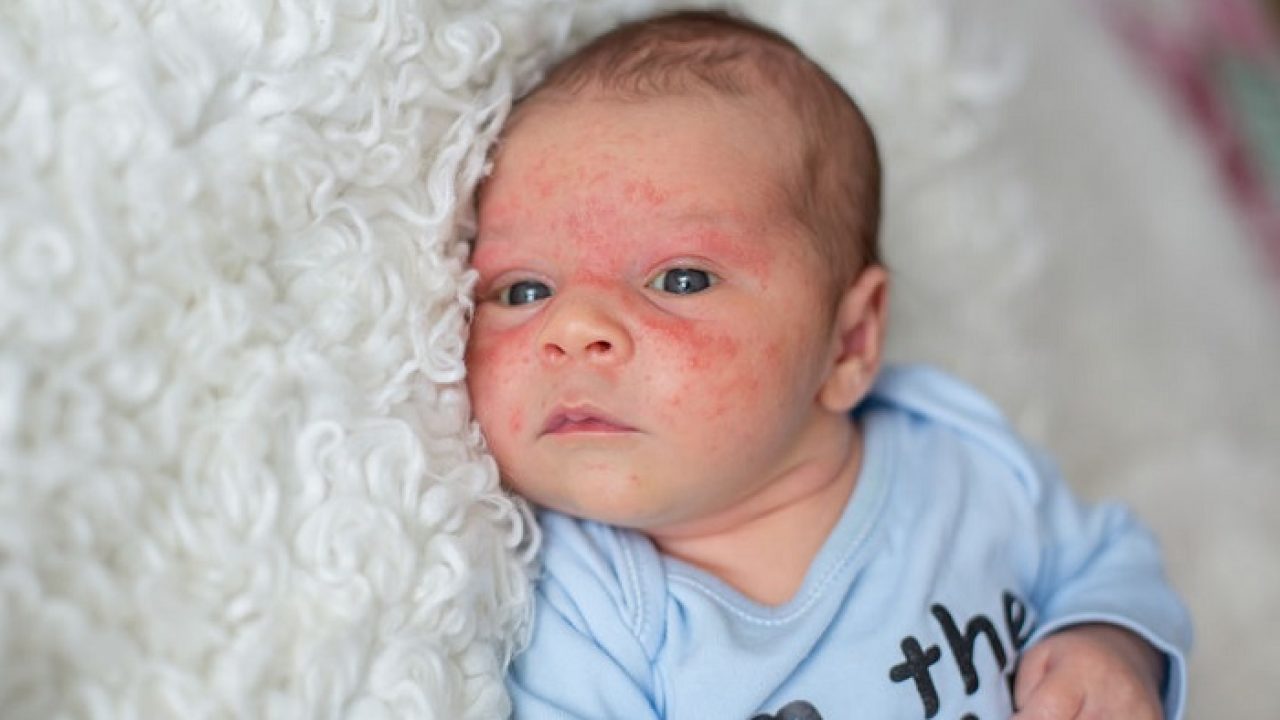
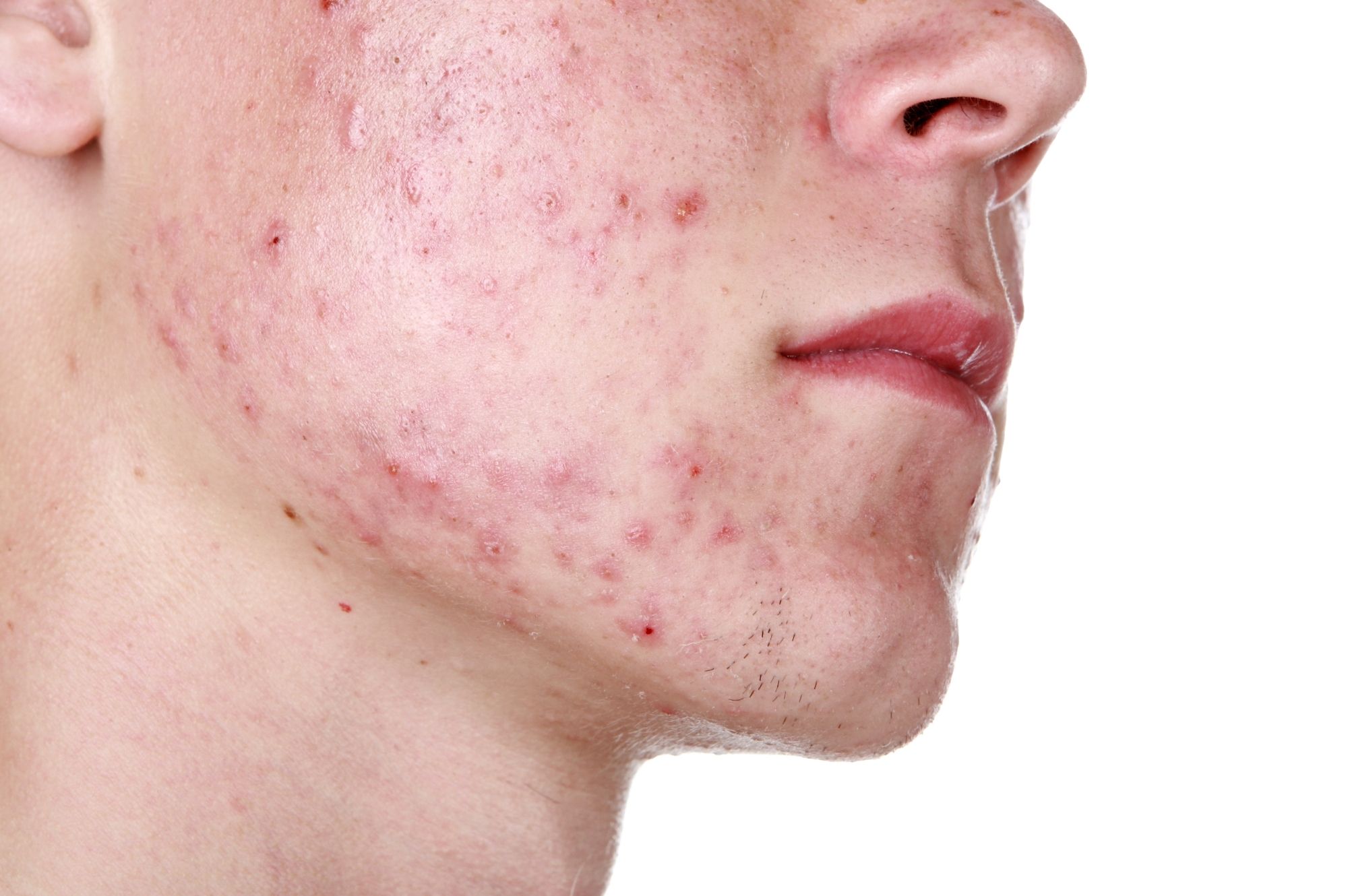
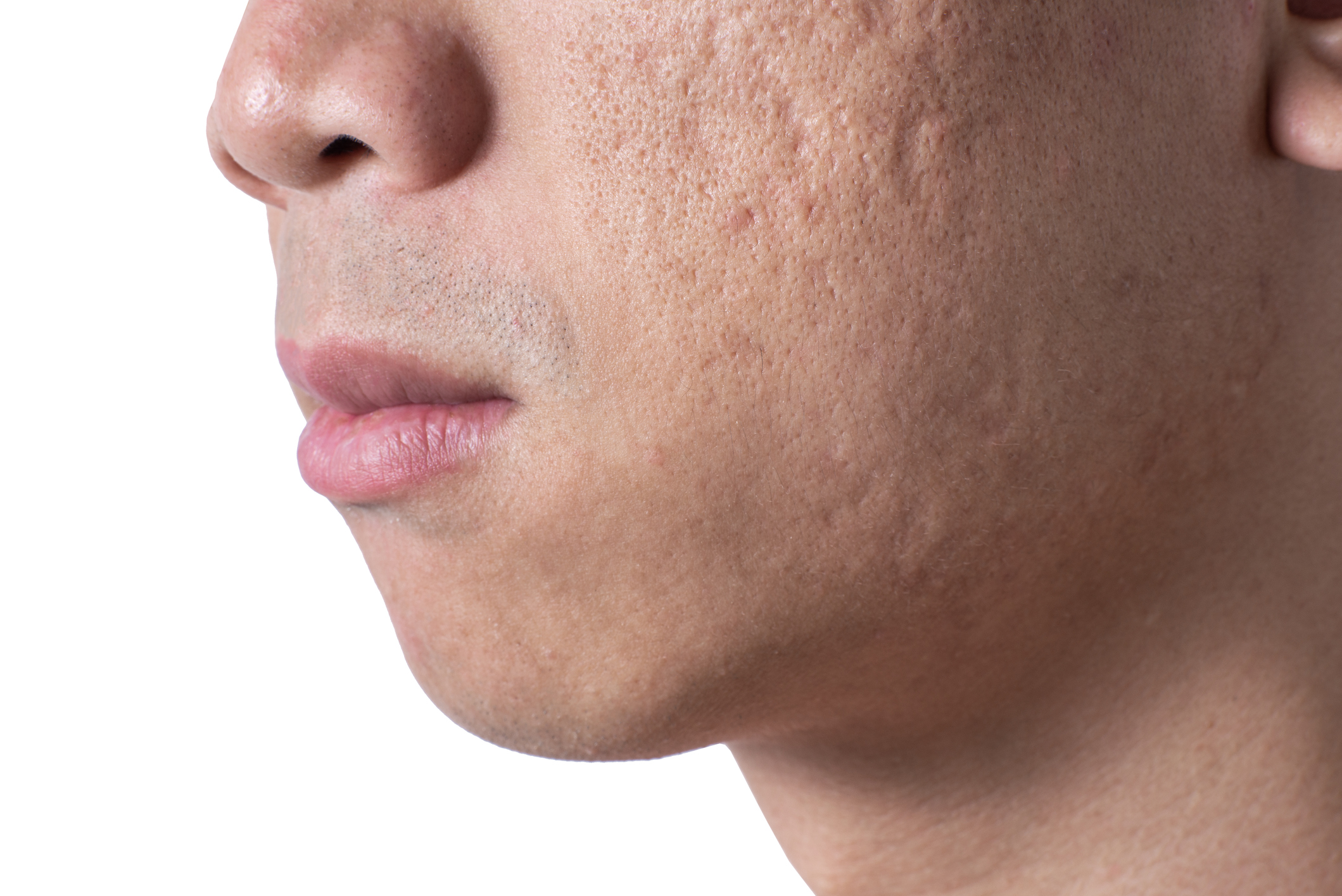
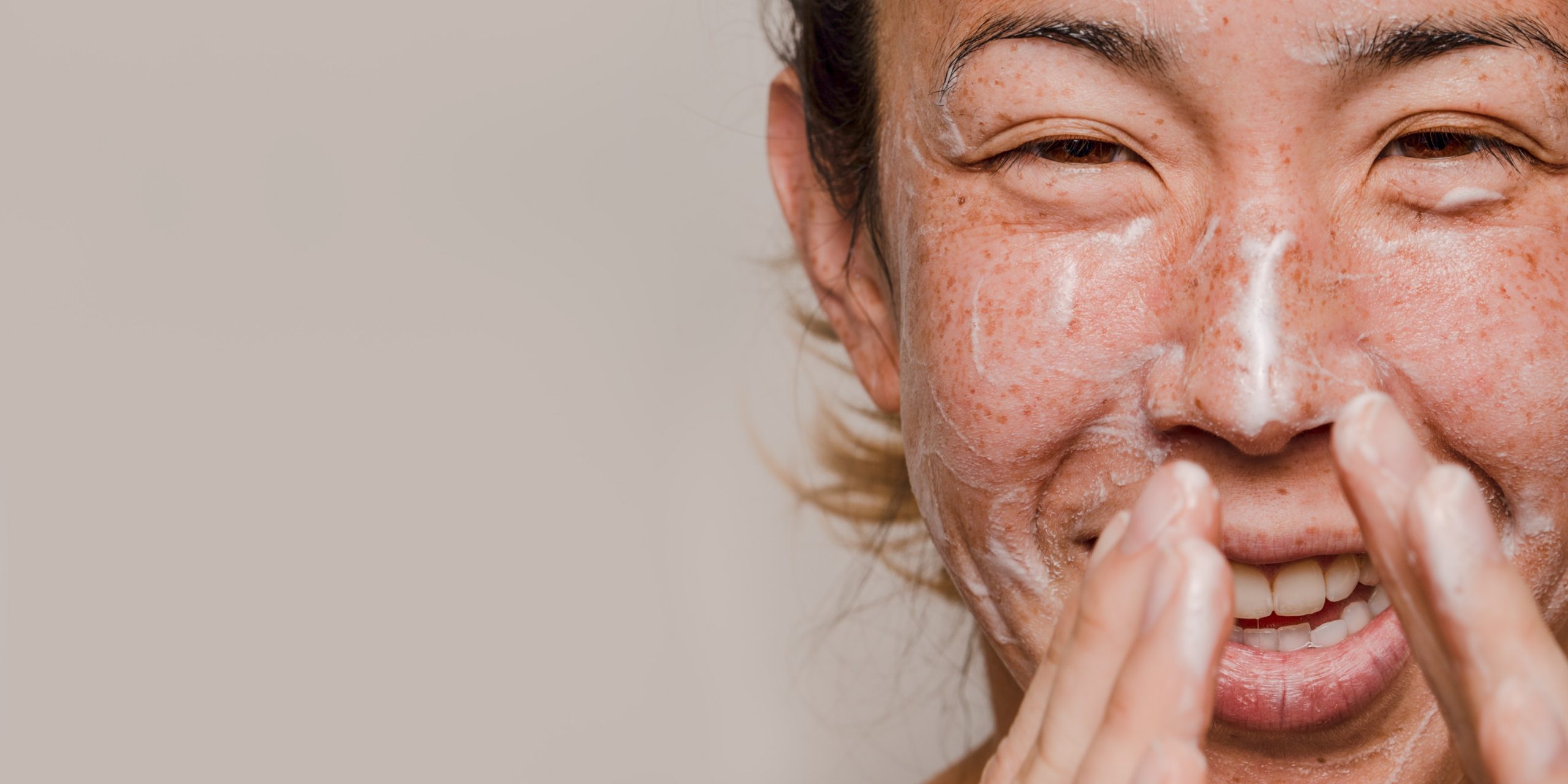

IS ACNE CURABLE?
Acne is treatable with topical therapy and over time will resolve. Visit skinfo for physician dispensed product recommendations. Use the Skin Wizard to choose a product regimen best suited for your skin.
HOW CAN I TREAT ACNE?
The treatment of acne revolves around decreasing oil secretion and killing the bacteria. This is accomplished by applying topical agents (creams, gels and lotions), taking oral medications and utilizing adjunctive treatments such as cleansers, chemical peels, cortisone injections and surgery (extraction of blackheads and whiteheads). Topical agents either help to unplug the pores (retinoids and certain acids) or kill bacteria (antibacterials). Most oral agents are antibiotics that kill bacteria, although there is one oral agent, isotretinoin (Accutane) whose principle action is to decrease oil gland activity. Sometimes acne seems to be especially hormone related in females and then contraceptive agents or other hormonally active medications are used. Newer light and laser sources and photodynamic therapy are exciting and promising new treatments that can help us avoid our dependence on oral medications for acne.
- Topical therapy Topical agents for acne may be categorized as either antibacterial or comedolytic (one that can open up obstructed pores). It is an important cornerstone of any acne therapy program to combine them, thus addressing the two most important causes of acne.
- Topical antibacterials typically used in acne are erythromycin, clindamycin, sulfacetamide and benzoyl peroxide. There are also products that combines benzoyl peroxide with erythromycin or clindamycin. Clindamycin and erythromycin are particularly useful in pregnant women, or those trying to conceive as they appear to be relatively safe (see below for discussion of medications in pregnancy).
- Comedolytics are either retinoids or acids. The mainstays of topical acne therapy are retinoids. These are compounds that are extremely effective in decreasing oil secretion and reversing the blockage of the pore. The original retinoid, Retin-A, developed by dermatologist Dr. Albert Kligman, revolutionized the treatment of acne. The main problem with the retinoids is skin irritation and photosensitivity. In the past few years competitors to Retin-A have emerged. Newer retinoids include Adapalene (Differin) and Tazorotene (Tazorac).
Retinol creams could be used in the treatment of acne, although there is no literature to support it in such a use. They are similar in chemical makeup to retinoids. No prescription is necessary to obtain them, although higher strengths are usually only available through a physician. - There are many types of alpha- (glycolic acid) and beta-hydroxy products on the market. Most are non-prescription and most acne products focus on cleansers. Salicylic acid (a type of beta-hydroxy acid) is more specific for acne since it can get into the pore for better cleansing. There are also chemical peels available that utilize 20-30% salicylic acid called B-Liftpeels that are effective for acne (these require application by a trained health care professional and are not self-applied products). Finally, azelaic acid (Azelex or Finacea) is a unique acid that has a direct effect on the pores and also has mild antibacterial activity. This appears to be a good choice for individuals with sensitive skin who have side effects from retinoids. It tends to sting upon application but this usually dissipates within a few minutes.
- Oral antibiotics Oral antibacterials used commonly in acne therapy include tetracycline, ampicillin, azithromycin, doxycycline, minocycline, erythromycin and sulfa-based antibiotics.
Oral antibiotics are the traditional treatment for inflammatory acne and they still work well. The main problem with their use is the fact that they control acne but do not cure it, thus necessitating chronic use. In addition, the acne bacteria have developed resistance to many of the antibiotics used. - Many acne experts now recommend minocycline as their first treatment of choice for oral antibiotics. This is based on the fact that there has been little demonstrated bacterial resistance to minocycline and it is extremely effective, especially when paired with appropriate topical agents. Also, minocycline, unlike tetracycline, can be taken with or without food, doesn’t cause sun sensitivity in most people, and doesn’t usually upset the stomach. Minocycline does have some drawbacks that are unique to its use, however. The most common side effect is light-headedness. Though not serious, this unsettling symptom manifests itself within the first few days of taking the drug and usually does not dissipate with time. Much less commonly, a bluish black pigmentation occurs in the mouth or gums and/or on the skin or nails. This usually resolves after stopping the drug but it can take months and is rarely permanent. Very rarely minocycline can cause severe reactions such as liver inflammation or a lupus-like syndrome. These appear to be more common after long-term usage, that is, one or more years of continuous use. Fortunately, recognition of these problems has increased, leading to the drug being discontinued immediately, in most cases averting any serious damage.
- Tetracycline is the old standard for acne. Still effective for many, it is highly cost effective, often costing only pennies per capsule. It is much better absorbed if taken on an empty stomach, that is, one hour before or two hours after a meal. This makes taking the medication more challenging, especially for teenagers. It is also photosensitizing, meaning that one needs to be very careful about sun exposure while taking this medication (and never go in a tanning booth). It can cause stomach upset (occasionally manifested as a sensation of increased hunger). Another oral medication in the tetracycline family, doxycyline, is also very effective. Although it can be taken with food, it has a higher incidence of gastric upset and is a more potent photosensitizer. It also uncommonly causes esophageal ulceration when the capsule is incompletely swallowed and gets stuck. It is important to take this drug with a full glass of water to avoid this potential complication. The macrolide antibiotics are erythromycin and azithromycin. Erythromycin had been one of the top acne drugs prescribed in the past but increasing bacterial resistance has made it less useful. It causes nausea in a fairly high proportion of those taking it but is otherwise usually a very benign drug. Azithromycin is a more recent addition that is easy to take because of its long half –life (amount of time required by the body to excrete the medication). However, this is widely used for upper respiratory infections and its use could cause some resistance.
- Ampicillin works well, too. In fact, in one study it showed surprisingly little bacterial resistance. It needs to be taken on an empty stomach yet hardly ever cause nausea. Uncommonly, it can cause diarrhea that occurs 2-3 weeks after beginning this medicine. It is not photo sensitizing and there are no long-term effects.
- Finally, there is the sulfa antibiotic trimethoprim-sulfamethoxazole. This is one of the most effective medications for acne but causes a high number of allergic reactions that can be severe. It is mildly photosensitizing and can cause a decrease in the white blood cell count with chronic use, so periodic blood tests are advised.
- Isotretinoin (Accutane) Isotretinoin is an oral medication that is in a class by itself since it is the only agent that can potentially cure acne. It is the most effective single agent for the treatment of acne, and although it is an expensive medication, it is arguably cost-effective as it can lead to no longer needing any medications or doctors visit. It is prescribed in a dosage that is based on a person’s weight, the usual course lasting about 4-6 months. It is reserved for people whose acne is refractory (doesn’t respond to treatment) or is scarring. Although not altogether pleasant to take due to numerous annoying side effects (see chart below), it has mainly been controversial because it is a teratogen (substance which is known to cause birth defects). It is a potent teratogen, too, one which causes major defects in the fetal evolution of the brain and heart, amongst other organs. However, this can only occur if the medication is present in the bloodstream of a pregnant woman. A woman of childbearing years taking this medication is advised to use at least two forms of adequate contraception or remain abstinent for the duration of the course of treatment and for one month after to prevent this from occurring. Once off this medication for one month, the medicine is completely excreted by the body, making it possible to conceive safely once again. More typical side effects are dryness of the skin, lips, and eyes. There is also a potential for serious mental depression, although this appears to be rare and hasn’t been proven to be due to the drug. Blood work is usually performed on a monthly basis for monitoring.
- Hormonal modulators of acne A subset of women with acne have been identified that may benefit from hormonal modulation. Typically these are women in their 20’s-50’s with jawline nodular or cystic acne that flares with or prior to menses. They may also have accompanying hirsutism (increased hair) or irregular menses. If the acne is accompanied with these other symptoms, blood tests of hormonal status are often performed. If the blood tests are abnormal, the counsel of an endocrinologist should be sought. Often these symptoms are the result of increased sensitivity to androgen (male-type) hormones. Females normally have these hormones which are made by both the ovaries and the adrenal gland. However, some women, despite normal circulating levels of these hormones, have increased end-organ (oil gland or hair follicle) sensitivity to stimulation of these hormones and thus exhibit increased oil gland activity or hair growth. In these women, it can be helpful to modulate the hormonal milieu, by either blocking the androgen receptors (molecules that sit on the surface of cells) or androgen production by the adrenal gland. The former can be accomplished with spironolactone, an androgen blocker, and the latter can be achieved with oral contraceptives. The newest oral contraceptives, Yasmin and Ortho-Tricyclen have actually been approved by the FDA for the treatment of acne.
- Photodynamic Therapy A new and promising method of treating acne even of moderate to severe variety which doesn’t require taking oral medications has been introduced in the past couple of years. Photodynamic therapy involves putting a clear liquid medication on the effected area (face, chest and/or back) called Levulan (20% 5-aminolevuliniv acid ) and letting it soak in over a period of 30-60 minutes. Then the skin is exposed to either a light or a laser. Even though the medication is washed off completely, a residue remains that makes the person extremely sensitive to light for 48 hours. Typically then, one would need to stay completely out of sunlight for 2 days after each treatment. Usually 3 treatments over 6 weeks are administered and results thus far have shown 50-100% response, with remissions anywhere from 3-12 months. The main drawbacks of the procedure are the 2 days of photosensitivity, a potential for a sun-burned appearance for a couple of days and the fact that most insurance companies don’t cover it. The great thing is that oral medications aren’t necessary and that it appears to really shrink the pores and cause a lot of smoothing of the skin.
- Other laser and light treatments Although there is a pretty good amount of literature on the treatment of acne with blue light alone, our experience with it has been pretty disappointing, so we usually use PDT (see above). There are also laser in the infrared light range (Smoothbeam) and radiofrequency devices (Thermacool) that have had some scientific literature showing that they are effective. In addition, there are many other laser systems with claims that they are effective in acne including intense pulsed light, blue and red light alternating, blue light with radiofrequency and others.
SCHEDULE AN APPOINTMENT TODAY
ADDRESS
711 E Lamar Blvd # 200
Arlington, TX 76011
moreinfo@acderm.com
PHONE
817-795-SKIN (7546)
HOURS
Mon – Thur | 7:00 AM – 4:00 PM
Fri | 07:00 AM – 12:00 PM
Closed on Weekends
GO WITH CONFIDENCE
How can I find out more?
Where did this information come from?
Bergfeld, WF. Topical retinoids in the management of acne vulgaris. Journal of Drug Development and Clinical Practice, 1996, Pps. 1-6.
Graupe K, Cunliffe WJ, Gollnick HP, Zaumseil RP. Efficacy and safety of topical azelaic acid (20%cream): an overview of results from European clinical trials and experimental reports. Cutis 1996 Jan;57(1Suppl):20-35.
Piererard GE, Arrese JE, Claessens N et al. [Bacterial resistance during anti-acne antibiotic therapy. How to limit the risk.]Article in French. Rev Med Leige 1999 Feb;54(2):100-4.
Cooper AJ. Systematic review of Propionibacterium acnes resistance to systemic antibiotics. Med J Aust 1998 Sep 7;169(5):259-61.
Fenske AN et al: Cutaneous pigmentation due to minocycline hydrochloride. J Am Acad Dermatol 3:308-310,1980.
Layton AM and Cunliffe WJ. Minocycline induced pigmentation in the treatment of acne-a review and personal observations. J Dermatol Treatment 1:9-12,1989.
Elksysm O, Yaron M, Caspi D. Minocycline-induced autoimmune syndromes: an overview. Semin Arthritis Rheum 1999. Jun;28(6):392-7.
Bjorkman A, Phillips-Howard PA. Adverse reactions to sulfa drugs: implications for malaria chemotherapy. Bull World Health Organ 1991;69(3):297-304.
Guillonneau M, Jacqz-Aigrain E. [Teratogenic effects of vitamin A and its derivatives.] Article in French. Arch Pediatr 1997 Sep;4(9):876-74.
Mitchell AA, Van Bennekom CM, Louik C. A pregnancy-prevention program in women of childbearing age receiving isotretinoin. N Engl J Med 1995. Jul 13;333(2):101-6.







